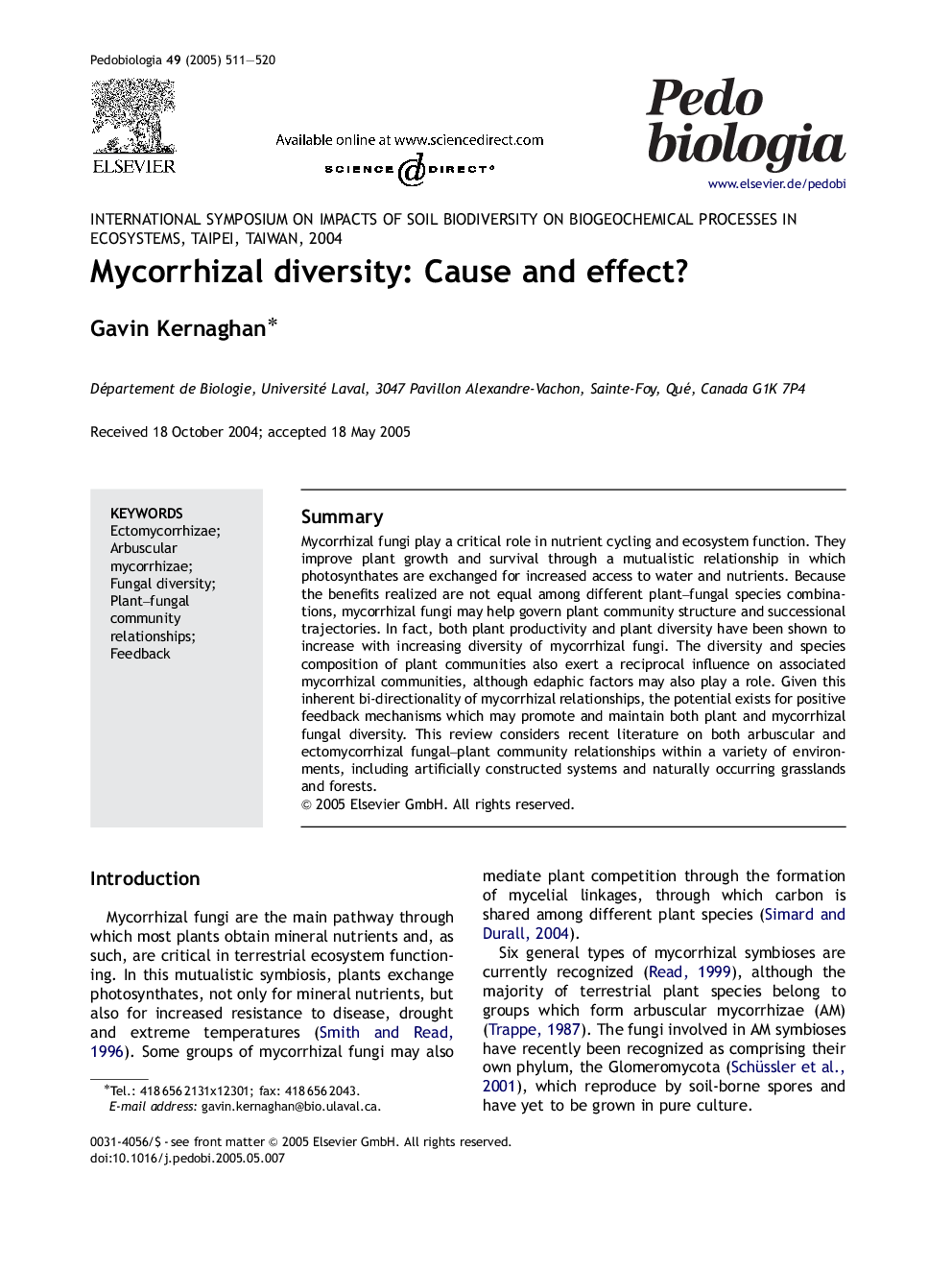| Article ID | Journal | Published Year | Pages | File Type |
|---|---|---|---|---|
| 10878668 | Pedobiologia | 2005 | 10 Pages |
Abstract
Mycorrhizal fungi play a critical role in nutrient cycling and ecosystem function. They improve plant growth and survival through a mutualistic relationship in which photosynthates are exchanged for increased access to water and nutrients. Because the benefits realized are not equal among different plant-fungal species combinations, mycorrhizal fungi may help govern plant community structure and successional trajectories. In fact, both plant productivity and plant diversity have been shown to increase with increasing diversity of mycorrhizal fungi. The diversity and species composition of plant communities also exert a reciprocal influence on associated mycorrhizal communities, although edaphic factors may also play a role. Given this inherent bi-directionality of mycorrhizal relationships, the potential exists for positive feedback mechanisms which may promote and maintain both plant and mycorrhizal fungal diversity. This review considers recent literature on both arbuscular and ectomycorrhizal fungal-plant community relationships within a variety of environments, including artificially constructed systems and naturally occurring grasslands and forests.
Related Topics
Life Sciences
Agricultural and Biological Sciences
Animal Science and Zoology
Authors
Gavin Kernaghan,
